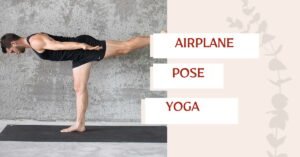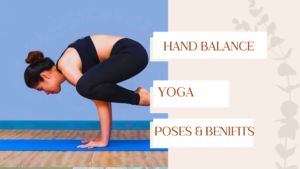Introduction
Yoga group Pyramid Pose,Yoga enthusiasts, fitness beginners, and wellness seekers alike are constantly in search of poses that offer maximum benefits in minimal time. Enter the Yoga group pyramid pose—a seemingly simple yet profoundly effective stance that can revolutionize your yoga practice.
This blog post will explore the many facets of the Yoga group pyramid pose, from its physical benefits to its mental and spiritual impact.
We’ll provide a comprehensive guide on how to perform it correctly, offer real-life testimonials, and suggest ways to incorporate it into your routine. By the end of this read, you’ll be eager to integrate this powerful pose into your yoga practice.
The Basics of the Yoga group Pyramid Pose
Step-by-Step Guide
The Yoga group pyramid pose, also known as Parsvottanasana, is a fundamental standing pose in yoga that combines the elements of forward bending and balance. Here’s how to do it:
- Start in Mountain Pose: Stand tall with your feet together and hands at your sides.
- Step Back: Take a step back with your right foot, placing it about 3-4 feet behind your left foot. Keep both legs straight.
- Align Hips: Square your hips forward to align with the front of your mat.
- Fold Forward: Slowly hinge at your hips and fold forward over your front leg, keeping your spine long and straight.
- Hands Placement: Place your hands on your front leg, the floor, or use blocks for support.
- Hold and Breathe: Stay in this position for 5-10 breaths, then repeat on the other side.
Alignment Tips for Beginners
Proper alignment is crucial for reaping the benefits and avoiding injuries:
- Hips and Shoulders: Ensure your hips and shoulders remain squared to the front.
- Legs: Keep both legs straight but avoid locking your knees.
- Spine: Maintain a long and straight spine; avoid rounding your back.
- Feet: Keep your front foot pointing forward and your back foot at a slight angle.
Modifications for Different Levels of Flexibility
Everyone’s body is different, and it’s essential to modify poses to suit your level of flexibility:
- Using Blocks: Place yoga blocks under your hands if you can’t reach the floor.
- Bent Knee: Slightly bend your front knee if you feel too much strain.
- Wall Support: Use a wall for support to help maintain balance and alignment.
Also Read:200 HOUR TEACHER TRAINING COURSE
Also Read:Best Yoga Poses for Photoshoot
The Physical Benefits of the Yoga group Pyramid Pose
Strengthening and Stretching
The pyramid pose is a full-body workout in disguise:
- Hamstrings and Calves: It provides an intense stretch for your hamstrings and calves.
- Spine and Shoulders: Lengthens the spine and opens up the shoulders.
- Hips: Helps in stretching and strengthening the hip muscles.
Improvement in Posture and Balance
Regular practice of the Yoga group pyramid pose can significantly improve your posture and balance:
- Posture: By aligning your spine and shoulders, this pose promotes better posture.
- Balance: The pose requires focus and balance, which enhances your overall stability.
Increasing Flexibility Over Time
One of the most significant benefits of the Yoga group pyramid pose is its ability to increase flexibility:
- Muscle Elasticity: Regular stretching of the hamstrings and calves increases muscle elasticity.
- Joint Mobility: Enhances the mobility of the hip and shoulder joints.
The Mental and Spiritual Benefits
Connection to Breath and Mindfulness
The Yoga group pyramid pose is not just about physical alignment; it’s also a gateway to mindfulness:
- Focused Breathing: Sync your breath with your movements for a meditative experience.
- Mindfulness: Concentrate on the present moment, enhancing your mindfulness.
Stress Relief
In our hectic lives, stress relief is essential, and the Yoga group pyramid pose offers just that:
- Relaxation: The forward bend is inherently calming and helps in activating the parasympathetic nervous system.
- Tension Release: Helps in releasing tension stored in your muscles and mind.
Enhancing Focus and Mental Clarity
By focusing on alignment and breath, the Yoga group pyramid pose can enhance your mental clarity:
- Mental Focus: Improves concentration by requiring focus on alignment and breath.
- Clarity: Clears mental fog, offering a sense of mental lightness and clarity.
Incorporating the Pyramid Pose into a Yoga Routine
Suggested Sequences
Integrating the Yoga group pyramid pose into your yoga routine can be seamless:
- Sun Salutations: Include the Yoga group pyramid pose in your Sun Salutation sequence for an added stretch.
- Standing Sequences: Pair it with other standing poses like Warrior I and II for a balanced routine.
- Cool Down: Use it as part of your cool-down sequence to relax and stretch your muscles.
Complementary Poses
Certain poses complement the Yoga group pyramid pose, enhancing its benefits:
- Warrior III: Enhances balance and strengthens the legs.
- Forward Fold: Offers a deeper stretch for the hamstrings.
- Triangle Pose: Opens up the hips and stretches the legs.
Integrating into Different Yoga Styles
No matter what style of yoga you practice, the pyramid pose can fit in:
- Hatha Yoga: Use it as a foundational pose to build strength and flexibility.
- Vinyasa Yoga: Flow into the pyramid pose seamlessly from other standing poses.
- Restorative Yoga: Modify the pose with props for a more restorative experience.
Real-life Stories and Testimonials
Personal Experiences
Real-life testimonials can provide inspiration and motivation:
- Yogi Master A: “The pyramid pose serves as a foundation for both physical and mental strength, making it an essential part of any yoga practice.”
- Instructor B: “By aligning the physical body, the pyramid pose aligns the mind, offering a sense of stability and grounding in our often hectic lives.”
- Practitioner C: “Regular practice of the pyramid pose not only improves flexibility and strength but also helps in developing a deeper awareness of the body and breath.”
Transformative Journeys
Individuals have experienced profound transformations through the pyramid pose:
- Case Study: Jane, a regular yoga practitioner, noticed significant improvements in her posture and mental clarity after incorporating the pyramid pose into her routine.
- Testimonial: John, a fitness beginner, found the pyramid pose to be a game-changer in his flexibility and stress management.
Community Impact
The pyramid pose has also made a significant impact on the yoga community:
- Group Practice: Yoga groups practicing the pyramid pose together have reported increased camaraderie and mutual support.
- Workshops: Workshops focused on the pyramid pose have seen high participation and positive feedback.
Conclusion
The pyramid pose is a hidden gem in the world of yoga, offering a multitude of physical, mental, and spiritual benefits. Whether you’re a seasoned yoga enthusiast or a fitness beginner, incorporating this pose into your routine can lead to a profound transformation. We encourage you to give it a try and experience its benefits firsthand.
Remember, yoga is a journey, and every pose brings you one step closer to a more balanced and fulfilling life. For those looking to deepen their practice, consider joining our next yoga class, where we explore poses like the pyramid pose in greater detail. Share your experiences or ask any questions below—we’re here to support your yoga journey.
Happy practicing!
FAQs
What is the Pyramid Pose?
The pyramid pose, also known as Parsvottanasana, is a standing forward bend in yoga that stretches and strengthens various parts of the body, including the hamstrings, calves, spine, shoulders, and hips.
Who can practice the Pyramid Pose?
The pyramid pose is suitable for practitioners of all levels, from beginners to advanced yogis. However, those with specific health concerns should consult with a healthcare provider or a certified yoga instructor before attempting the pose.
Are there any precautions to take while practicing the Pyramid Pose?
Yes, individuals with back problems, hamstring injuries, or tight hips should approach the pose with caution. Modifications and props such as blocks can be used to provide additional support and make the pose more accessible.
Can the Pyramid Pose help with back pain?
Yes, the pyramid pose can help alleviate back pain by lengthening and stretching the spine, though it is essential to perform the pose correctly to avoid further strain. Always listen to your body and consider professional guidance if necessary.
How often should I practice the Pyramid Pose to see benefits?
Incorporating the pyramid pose into your yoga routine 2-3 times a week can yield noticeable improvements in flexibility, balance, and overall well-being. Consistency is key to reaping the full benefits of any yoga pose.




